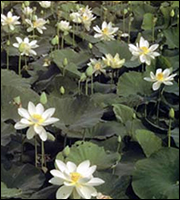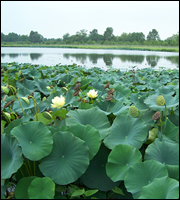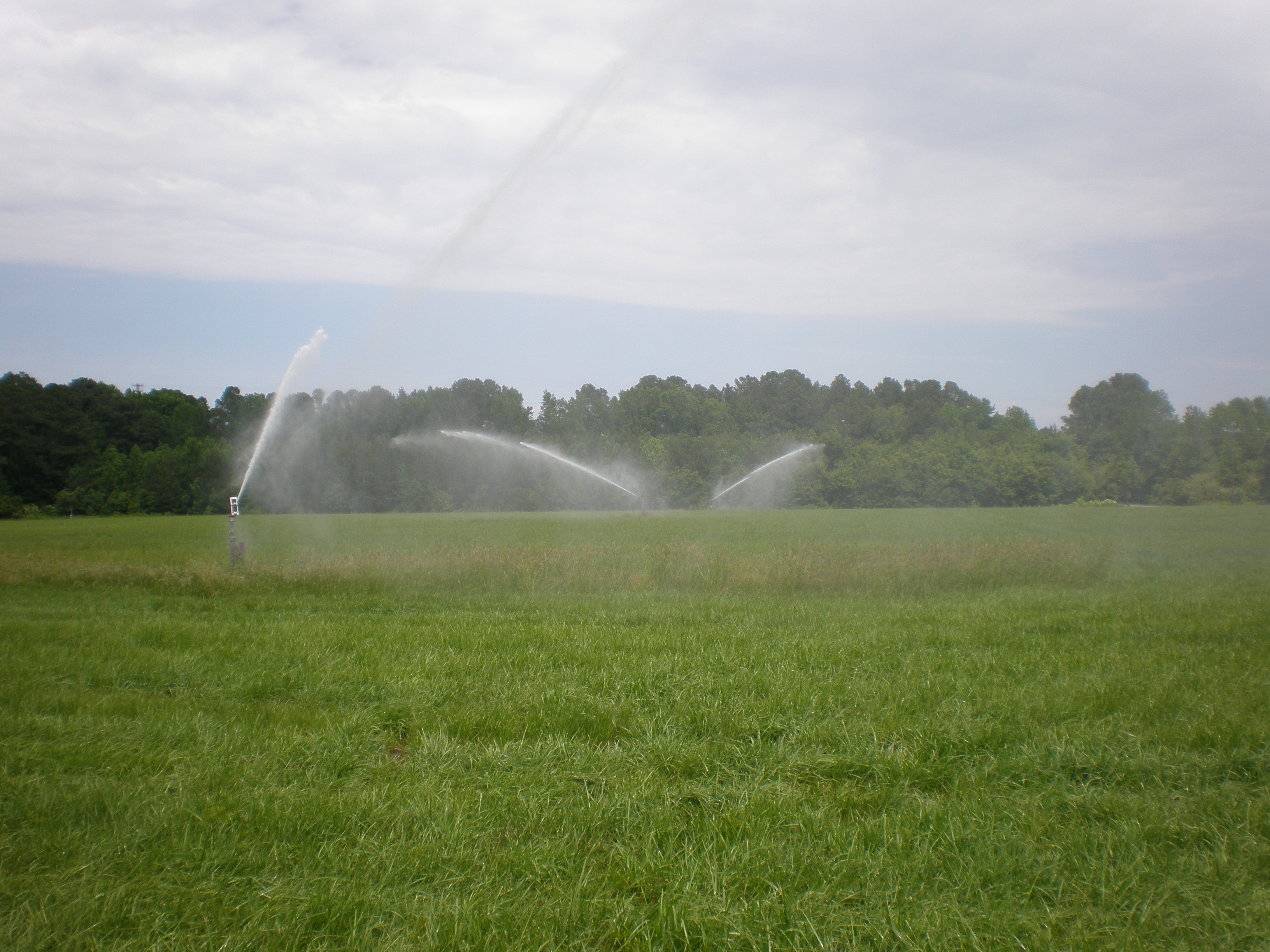Constructed Wetlands
After the Neuse River was declared “nutrient sensitive” in 1995, the City decided to undertake several nutrient reduction projects. The first was at the Water Reclamation Facility which was able to reduce nitrogen by up to 87%. A second innovative project was to send up to 4 million gallons of fully (advanced) treated wastewater from the Water Reclamation Facility to a man-made constructed wetlands so that this natural system could further “polish” nitrogen from the water.
In 2002, the City built 42-acres of constructed wetlands. Like in a natural wetlands, aquatic plants remove pollutants in the water by plant uptake and by microbial action in the roots and stems of the plants. To mimic nature, 52,000 wetland plants of 13 different species were planted in diked, clay-lined basins, creating a wetlands environment. Four zone types were built in the wetlands: the shallow mixed marsh, the deep mixed marsh, the transition zones, and the littoral zone.
The aquatic plants were selected to match the environment of each zone. The depths of the wetlands vary between 1-foot to 3-feet. As the advanced treated wastewater that has been disinfected with both ultra-violet light and chorine flows slowly through the 40-acres of wetlands, nutrients are “polished” from the water.
Water entering the constructed wetlands is around 3 mg/L total nitrogen. The resulting “polished” water has about 1 mg/L total nitrogen remaining in it prior to being discharged into the Neuse River. The constructed wetlands project cost $3.3 million to build; $1.64 million was provided in grant funds by the North Carolina Clean Water Management Trust Fund and the City provided $1.66 million.
The constructed wetlands “polish” the water year round, even in the winter when the plants are dormant, due to the microbial organisms in the soils and roots. The summertime is particularly beautiful in the constructed wetlands. Lush aquatic vegetation fills the basins. There are many varieties of flowering plants, such as the Blue Flag Iris, Fragrant Water Lily, Spatterdock, Pickerel Weed, and American Lotus. Visitors enjoy the scenic tours at the Constructed Wetlands.








